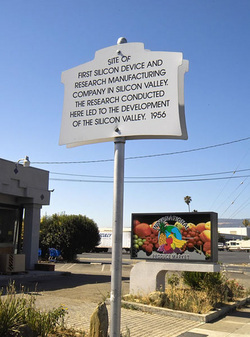The story begins 8 years back, in 2003. I was a "fresh-off-the-boat" grad student at Georgia Tech and had just started my Ph.D. research. My first assignment was to derive compact models for a few interconnect phenomena... While deriving compact models, the best approach is to start off with a few simplifying assumptions, derive equations and then relax the simplifying assumptions one-by-one. Unfortunately, I did not realize this back then... I was trying to include some really complex phenomena in my device models, and was finding it hard to come up with closed form expressions :-(
I remember the advice my Ph.D. advisor, Prof. Jim Meindl, gave me back then. He said, "When I was working at Stanford, I was fortunate enough to have an office three rooms away from Dr. William Shockley, one of the inventors of the transistor. Dr. Shockley's favorite quote was: Try Simplest Cases. Meaning you need to try simple things first when you explore new ideas, instead of getting lost in complications of the phenomenon you are exploring. That is my advice for you as well. " Prof. Meindl is a fabulous motivator of people - he knew a grad student would take a quote from an inventor of the transistor very very seriously! Well, I listened and learned. And not just that, I went home that evening and "googled" William Shockley. Dr. Shockley was a fascinating person... Since the above incident, I've devoured dozens of books about Dr. Shockley and his work. I've also read many articles and papers he's written... let me share a few interesting things about Dr. Shockley in this blog-post.
Everyone knows Dr. Shockley won the Nobel Prize in 1956 for co-inventing the transistor. But not many people have seen a video of him get it. Below is the magic moment, courtesy YouTube :-)
What did Dr. Shockley invent or develop?
- The Bipolar Junction Transistor --> Dr. Shockley invented this device in 1948. As you know, this device was the first commercially viable transistor. It was the workhorse of all semiconductor chips for three decades, and is used even today in many applications.
- Negative resistance devices, such as the Shockley diode and the Thyristor --> Dr. Shockley invented these devices in 1950.... they are used in many power device applications today. Back in the 1950s, Dr. Shockley felt these devices would be more important than the transistor and wanted his engineering team at Shockley Semiconductor to focus on this. Unfortunately, his employees such as Bob Noyce, Gordon Moore and Jean Hoerni had a difference of opinion with him, and felt the transistor would be more successful than the Shockley diode. When Dr. Shockley didn't listen to their opinion and continued focusing on Shockley diodes, they left and founded Fairchild Semiconductor, and the rest, as they say, is history.
- The Diffusion process --> Dr. Shockley suggested using this process to create junction transistors in 1948.
- Ion-implantation --> This was another Shockley invention, was described by him in 1954.
- Lithography for microelectronics --> There's an interesting story behind Dr. Shockley's contribution to this fundamental idea. You can read about it in this IEEE paper.
Some interesting tidbits about Dr. Shockley:
- He used to sign documents as W=S or W=Shockley, instead of signing as William Shockley or Bill Shockley.
- In his later years, Dr. Shockley became unpopular due to his views on race and genetics. But hey, everyone has their own eccentricities and unusual ideas.
- While Dr. Shockley was a fantastic technologist, his experiments with management and entrepreneurship were not as successful. His start-up, Shockley Semiconductor, never recovered from the loss of Bob Noyce, Gordon Moore, Jean Hoerni and 5 other engineers when they left to found Fairchild Semiconductor (he called them the "Traitorous Eight"). The location of the old Shockley Semiconductor office in Mountain View is now a vegetable market :-( Check out the picture below:
- A group of about 30 colleagues of Dr. Shockley met at Stanford in 2002 to reminisce about their time with Shockley and his central role in sparking the information technology revolution, its organizer saying "Shockley is the man who brought silicon to Silicon Valley."










 RSS Feed
RSS Feed